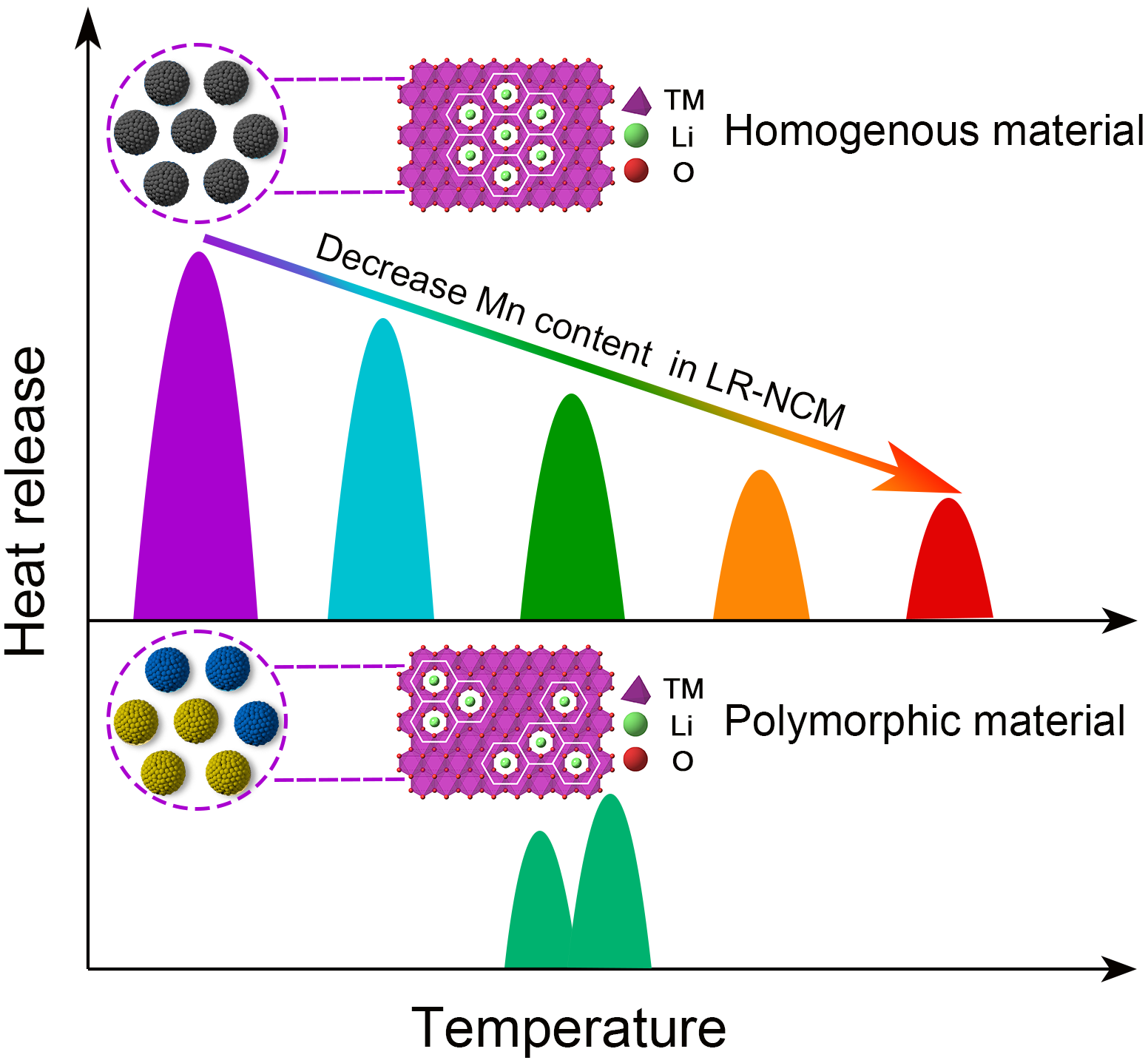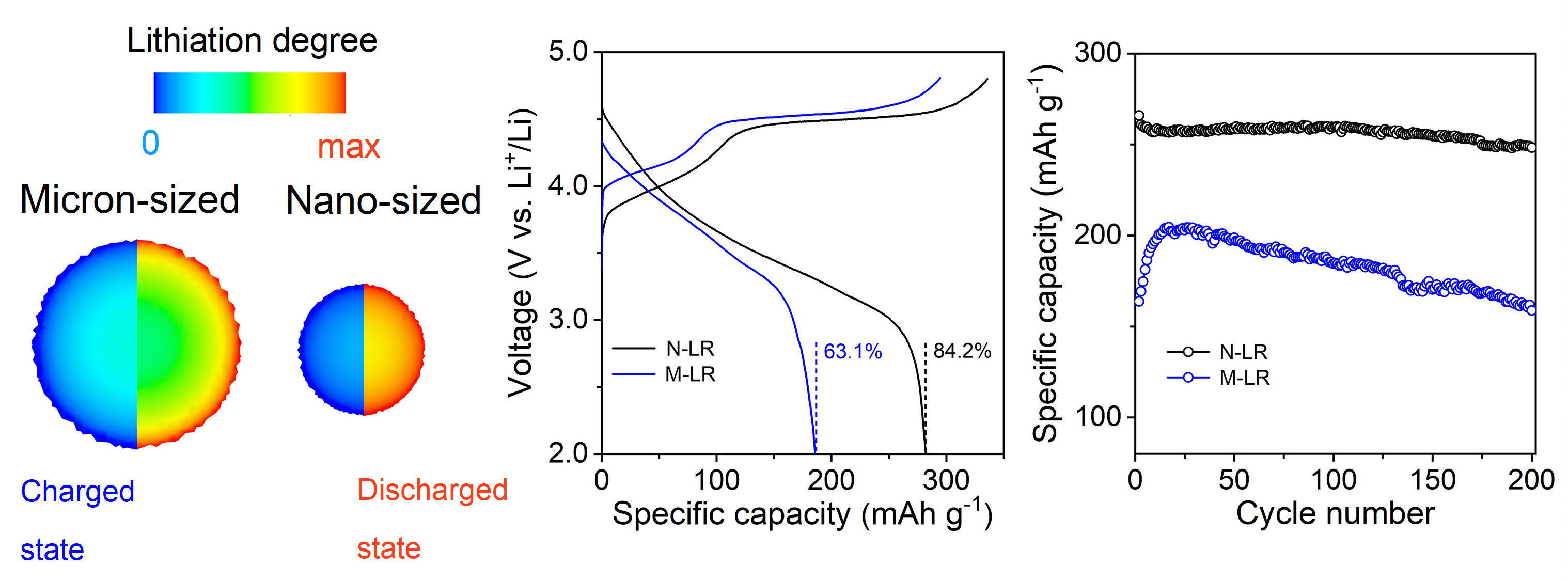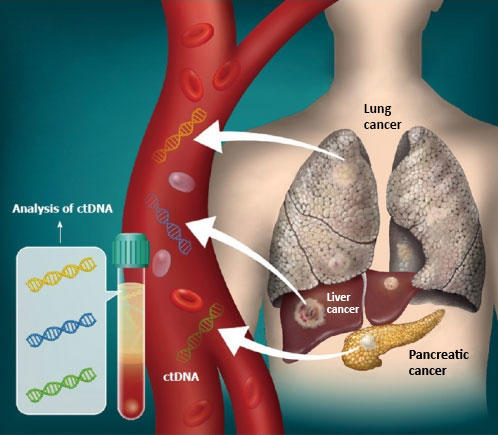Lithium-ion batteries (LIBs) have commercially dominated the portable electronics market in recent decades and have gradually evolved into the most encouraging market segment for electric vehicles (EVs). With a discharge capacity over 300 mAh g-1, Li-rich Mn-based layered cathode materials have emerged as promising cathode materials for developing high-performance Li-ion batteries.
Researchers led by Prof. LIU Zhaoping at the Ningbo Institute of Materials Technology and Engineering (NIMTE) of the Chinese Academy of Sciences has delved into the Li-rich Mn-based layered cathode materials, yielding a series of remarkable research progress. In their study published in Materials Today, the researchers have tested the safety performance of Li-rich layered cathodes.
The results show that the thermal runaway temperature of Li-rich Mn-based layered cathodes decreases with the increase of manganese (Mn) content.
Furthermore, high Mn content in Li-rich layered cathode materials contributes to a high discharge capacity, but leads to a reduction of the thermal stability and an acceleration of the oxygen release.
By virtue of these findings, a polymorphic composition was designed for Li-rich layered cathode material that can reach an excellent balance between the energy density and thermal stability.

In addition, the available capacity in a low Li-ion diffusion coefficient is sensitive to the change of grain sizes, ranging from micron-size, and submicron-size to nano-size, according to a study published in Energy Storage Materials.
Compared with submicron-sized and nano-sized Li-rich layered cathode materials, the materials with micron-sized grains show a superior crystallinity and a higher Li-ion diffusion coefficient.
However, the increased diffusion distance results in an extremely uneven Li-ion concentration distribution during the charge-discharge process. Consequently, the strain stress inside the grains accumulates, leading to an unsatisfied capacity retention and a rapid voltage decay.
This insight on the kinetic limitation of Li-ion diffusion in Li-rich layered oxides may shed light on the modification of Li-rich Mn-based layered cathode materials for high-performance LIBs.







